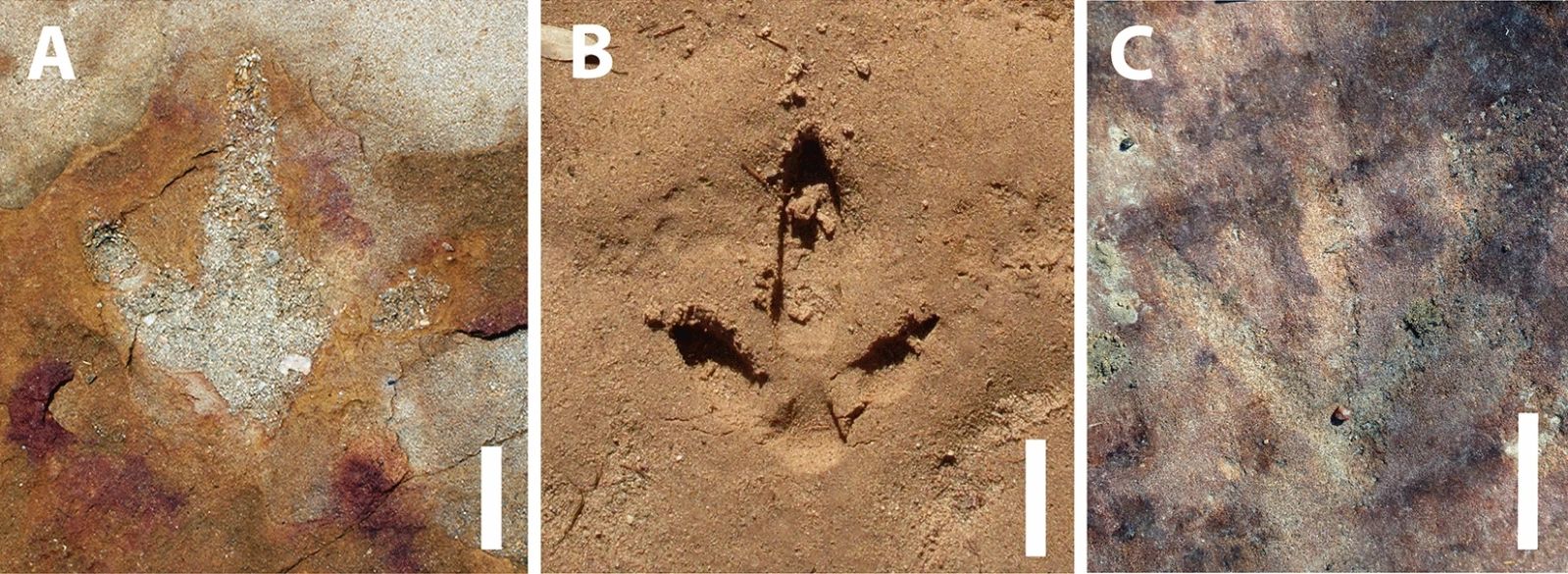Prehistoric humans engraved these dinosaur tracks
Follow us on Google News (click on ☆)

Comparison between tridactyl tracks and a tridactyl petroglyph.
(A) Theropod fossil track from the Serrote do Letreiro site;
(B) Recent track of Palaeognathae (by Steve Slocomb available on Flickr under CC BY 2.0 license);
(C) Tridactyl petroglyph from the Serrote do Letreiro site. Scale bar = 2 inches (5 cm).
The study reveals that petroglyphs dating from 3,000 to 9,000 years ago, symbolic drawings carved on a natural rock surface, could have been inspired by dinosaur footprints preserved in the same area. Although it has been difficult to precisely identify the types of dinosaurs that left these tracks, researchers suggest they could belong to ornithopods, theropods, and sauropods, which roamed the area about 140 million years ago.
The close relationship between the petroglyphs and the dinosaur tracks is remarkable. This suggests that prehistoric artists were not only aware of these tracks but also likely fascinated by them, to the point of incorporating these elements into their art and perhaps even into their rituals or ceremonies.
This study also sheds light on the hypothesis that the creators of these petroglyphs might have used hallucinogens. This theory is based on the similarity between the artistic motifs and the visions commonly reported by users of such substances in the modern era.
The significance of this discovery lies not only in its contribution to the understanding of the interaction between early humans and their environment but also in the insight it offers into how dinosaurs and their footprints may have influenced the cultures and beliefs of ancient peoples.